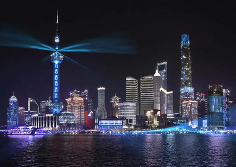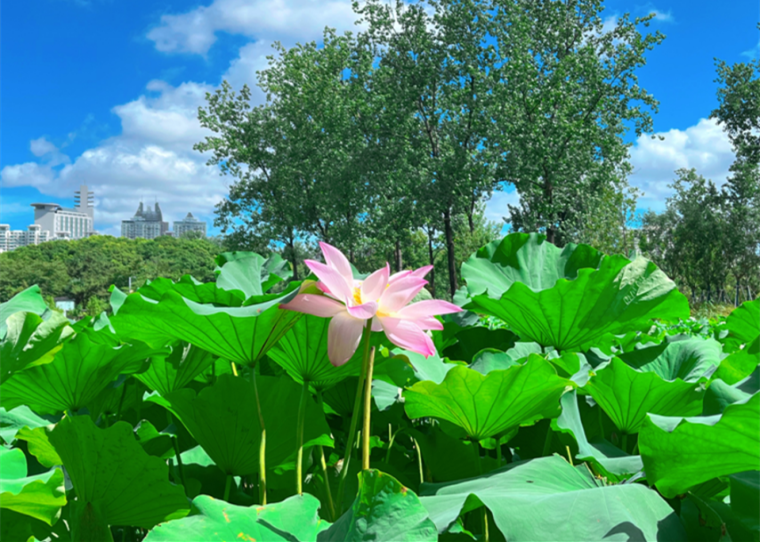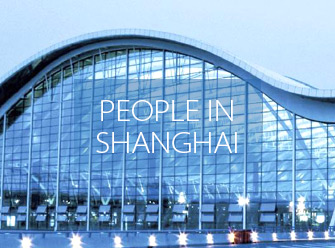Urban planners to grasp raft of opportunities
Shanghai's suburbs to be comprehensively optimized during the 14th Five-Year Plan
Urban development will play a major role in Shanghai during the 14th Five-Year Plan period (2021-25), with a monumental amount of projects across the whole city creating opportunities for global companies.
A major part of Shanghai's urban development over the next five years will center on the development of the suburbs that surround the city, building them into comprehensive areas that serve all aspects of life from residential, retail, leisure and entertainment needs, to those of industry and commerce.
Circling the central area of Shanghai, and from northwest to southeast, the five suburbs are Jiading district, Qingpu district, Songjiang district, Fengxian district, and Nanhui in Shanghai Pudong New Area.
According to the city's 14th Five-Year Plan and Long-Term Vision for 2035, by 2025, the number of permanent residents of the five suburbs will reach about 3.6 million, with the GDP of each suburb hitting 1.1 trillion yuan ($170.1 billion). By 2035 these suburbs will become "comprehensive independent nodes "driving the development of the Yangtze River Delta, according to the city government.
Apart from building more infrastructure around the city, the Shanghai government aims to increase its soft power by creating a better and happier life for residents.
Li Qiang, Shanghai's Party chief, said in the plenary meeting of the Shanghai Municipal Committee of the Communist Party of China on June 22, that many aspects of hard power in the city meet top-level requirements among major destinations worldwide, including the development of its economy, finance, trade, transportation and scientific innovation. However, there is still room for Shanghai to improve its soft power.
Li said that urban soft power is mainly about an intangible strength, guided and formed by value, culture and systems.
Guided by Li's remarks, the Shanghai government will take measures to support the development of related industries in the next five years.
According to the five-year plan for the cultural industry released on Sept 2, Shanghai will produce no less than five outstanding TV and film productions, and two or more high-quality theater performances every year, from now till 2025.
A series of new cultural facilities, such as the east wings of the Shanghai Library and the Shanghai Museum, the Grand Shanghai Opera House and the children's library in Pudong, will also be completed.
The city government also unveiled development plans to upgrade the banks of the Huangpu River and add more green space over the next five years to create a better living environment for residents.
By the end of 2025, Shanghai will add 20 kilometers of waterfront walkways and 400 hectares of green space along the Huangpu River, which opened 45 km of riverside walkways to the public in 2018. The city also announced the Thousand Parks Program, with the goal to have 1,000 parks in Shanghai by 2025, and 2,000 parks by 2035.
The city's efforts to boost urban development across different sectors is hoped to foster a new round of economic development and provide opportunities for businesses, including design companies and urban planners, big and small.
"There is room in the market for everyone-large or small firms, local or foreign, as the market in China is large and diversified," said Karen Cvornyek, principal and president of Asia at B+H Architects.
"As China's financial center, Shanghai is a fast-growing, dynamic metropolitan city, with strong legal, political, social and business environments," Cvornyek said.
"The city's business ecosystem has attracted the best talent in China and from around the globe, making it an ideal city for international companies like B+H," she said.
Headquartered in Toronto, B+H provides a full-spectrum of solutions in architecture, strategy, planning, landscaping, interior design, experience design and consulting services. In 1992, it opened a studio in Shanghai after winning a competition to design the Xiamen Gaoqi International Airport.
For B+H, its studio in Shanghai has played a significant role in building a base from which it supports its clients across the region and fueled expansion into more places throughout Asia, according to Cvornyek.
"As one of the first foreign architects to establish a presence in Shanghai, we have more than a quarter of a century of experience working with local clients, and have already played a significant role in the urban development of China. Back in 1992, Shanghai was the obvious choice for our international architects to begin their collaboration with local design talent and clients, and it remains the best choice to this day," Cvornyek said.
Like Cvornyek, many in the sector have spoken highly of Shanghai's favorable business environment.
"In my opinion, Shanghai is a city with the best business environment," said Bai Rui, vice-president and general manager of Northern and Eastern China at AECOM.
The United States infrastructure consulting firm started its business in China some 40 years ago. Its Shanghai office now acts as its regional management center. AECOM has completed a host of projects aimed at improving Shanghai's environment and public spaces, such as areas along the Huangpu River, Binjiang Forest Park and Biyun Green Wedge, said Lee Parks, director of landscape at AECOM.
According to Bai, the Shanghai government provides favorable policies for foreign businesses.
Stable policies and transparent processes are of great importance for companies in design and relevant industries which have comparatively high requirements for compliance, Bai said. Shanghai, as the financial and commercial hub of China, has kept accelerating its business reforms and improving its business environment.
As a whole, thanks to years' of efforts, China moved from 78th place to 31st in the World Bank's "Ease of Doing Business" rankings last year.
Also last year, Shanghai released its first regional regulation of the National Foreign Investment Law, which further broadens market access for companies, and better protects their legitimate rights and interests.
With the city's supportive policies, favorable environment and broader market, foreign companies are expressing their confidence in the future of Shanghai, and are keen to become more involved with its development initiatives.
"The layout of Shanghai is diversified and balanced, which means each district in the city has its own commercial center with a series of recreational facilities. This meets the different needs of residents and makes life more livable," Bai said, noting that AECOM is actively seeking opportunities to cooperate in the city's urban development.
The approach that the Shanghai government is taking with its urban development is one that places people at the very center, a concept that sits in line with that of B+H.
"The human element speaks to our belief that no matter the size or scale of the design, it's about how people will interact with a space and how that space will encourage people to interact with one another," Cvornyek said.
Cultural heritage protection also plays an important part in achieving the city's inclusive and sustainable development, and has been stressed by the Shanghai government. For instance, in the construction of the large-scale mixed-use development HKRI Taikoo Hui, a historical building has been preserved.
At the original site of the project, the historical Minli Middle School, dating back to 1920s, was located. To protect this historical legacy, the 3,300-metric-ton building was hydraulically jacked up and slid along a pre-laid track that runs across a distance of 57 meters. The building was eventually moved to its current location in 13 days, and created a monumental achievement in historical building preservation.
AECOM's multidisciplinary team provided full structural engineering consultancy services in conjunction with creating a unique landscape design for the development.
Drawing inspiration from traditional Shikumen elements and integrating Shanghai's Eastern-Western cultural heritage, HKRI Taikoo Hui is a sustainable landscape design that integrates with the overall architectural style.
With the ingenious landscaping of trees, flowers, water features and sculptures, the area has become a spiritual retreat that promotes a holistic balance of work and leisure in the crowded city.
As China makes the green commitment to hit peak emissions before 2030, and carbon neutrality by 2060, there are great opportunities for urban planners to serve the needs of the market through the renovation of existing buildings.
Through retrofitting old buildings with high-performance and energy efficient systems, B+H said it is helping clients to reduce energy consumption and pollution.
The city is accelerating its pace in "building itself into a socialist modern metropolis that enjoys international prestige". And it is strengthening efforts to explore more innovative ways in establishing a "city of the future", Li said when the government signed a cooperation framework agreement on urban development with real estate developer Vanke.
Li said the city welcomes more enterprises to seize development opportunities, give play to their advantages, increase investment in Shanghai and become more involved with the city's business initiatives.
"By providing the most cutting-edge, creative insights and solutions, we will further explore the innovative development of the city, and further shape the future urban landscape of Shanghai," Li said.
Shanghai will continue to improve its business environment, and provide quality services to support companies' further growth in the city, Li said.
 Contact Us
Contact Us

 Brilliant light show to illuminate Huangpu River
Brilliant light show to illuminate Huangpu River Maple leaves paint splendid scenery in Pudong
Maple leaves paint splendid scenery in Pudong Appreciate alluring lotus blossoms in Pudong's Century Park
Appreciate alluring lotus blossoms in Pudong's Century Park New pedestrian street boosts Pudong's night economy
New pedestrian street boosts Pudong's night economy 


